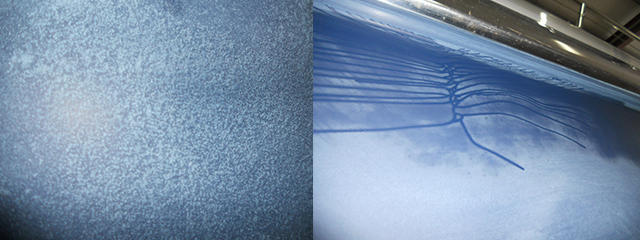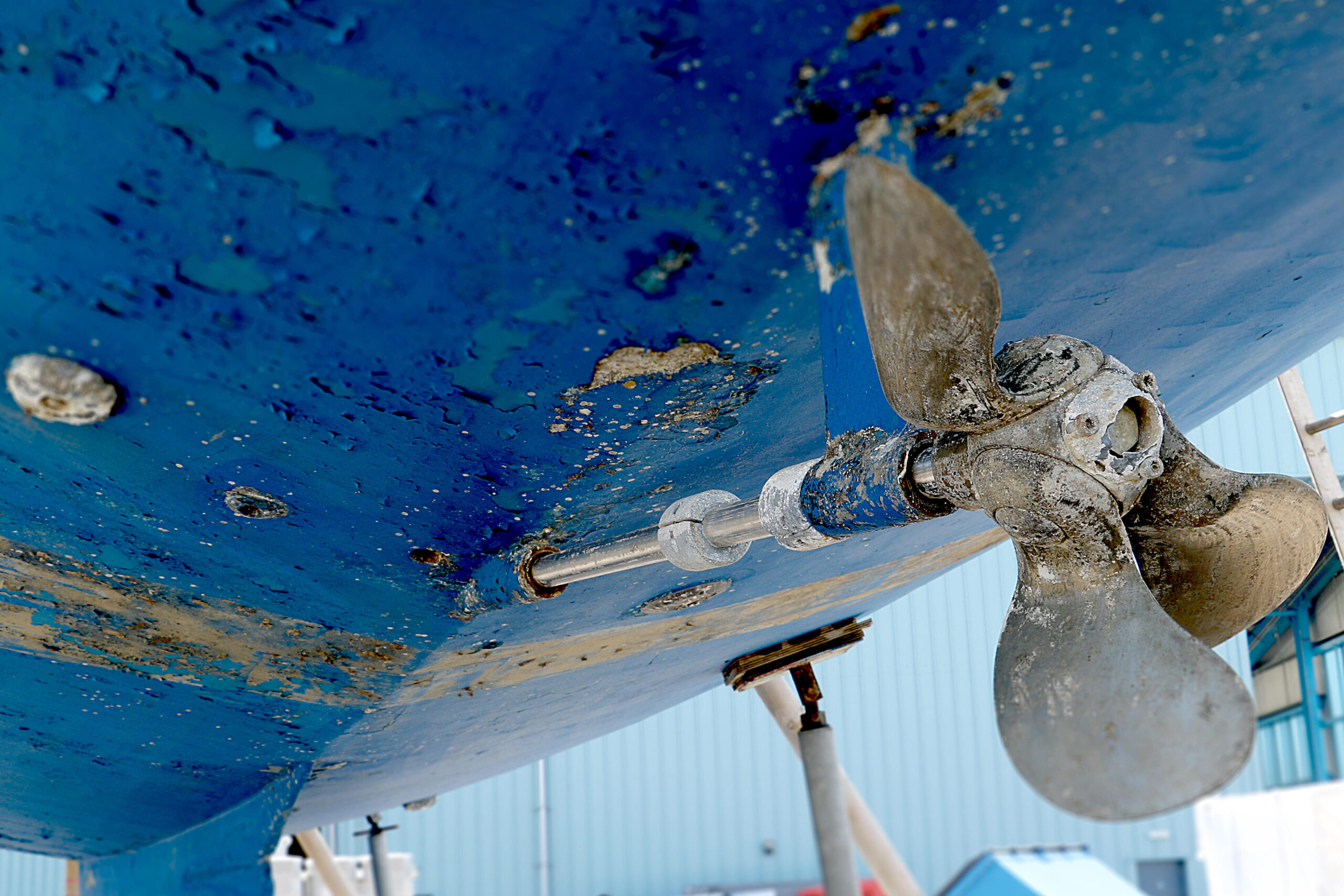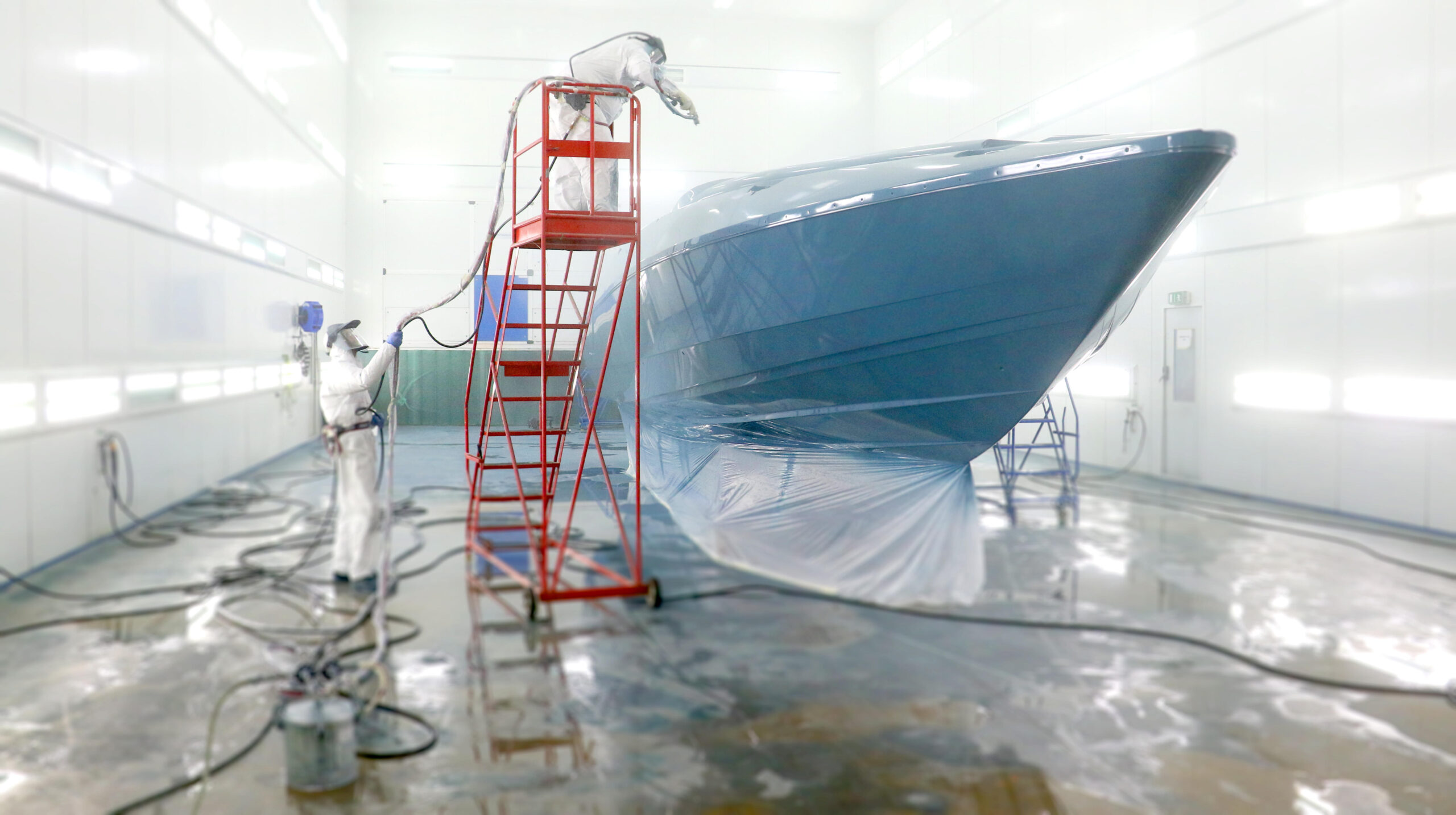Yacht Resprays and Repainting
There comes a point in a yacht or boat’s life when the original gloss and lustre has disappeared and cannot be reinvigorated without a more major intervention. Whether the gelcoat is tired and cannot be brought back to life with a cut and polish; or the previously painted surface has degraded, or perhaps the colour of your new yacht doesn’t suit your aspirations, repainting the topsides of your boat can be the only viable option. Although this may be a daunting prospect, Berthon have some great tips on how to ensure a successful outcome.
Signs to look out for
Telltale signs of when to repaint your boat will differ according to the material the boat is made out of. The gelcoat of a GRP craft will lose its glossy look, chalky blooms appear, the colour fades and blemishes like crazing, star-cracking or pinholes begin to emerge. Steel or aluminium vessels show signs of corrosion, while wooden crafts may start to rot where the paint has split. A timely repaint will prevent lasting damage.


Top Tips
- Choosing the right topcoat for your boat will depend on your priorities. What’s more important to you? Long-lasting gloss, long-lasting colour, ease of maintenance or value for money? Our experts will help find the right one for you.
- To achieve the perfect finish, you must start with a perfect surface. Before we repaint, our expert team first treat the underlying substrate to ensure a blemish-free foundation.
- The right conditions are just as important as the correct materials. Berthon has a dedicated paint spraying oven that automates temperature and humidity in a dust-free environment.

Successful Preparation – the key to great painting
The key to any successful marine paint job is in the preparation and application. The condition of the underlying substrate needs to be understood and remedied using the correct methods. Cracked and crazed areas need to be ground out, then refilled and faired. In some rare cases, additional glass cloth and epoxy may need to be added before refining with fairing compounds. Pinholes can be a common problem with old gelcoats, as the process of polishing gradually removes the gelcoat layer revealing voids and air bubbles from the original lay-up. Ensuring that these areas are filled can require a two or even three-step process using tight screeds of finishing fillers and high build epoxy primers before final sanding and application of the undercoat and topcoat.
Attention to detail at this stage will ensure a beautiful result that delivers maximum value for money. Any short-cuts taken will almost always show themselves in the finish.
Visit Berthon Yacht Painting for more details and information on what Berthon can offer you.

